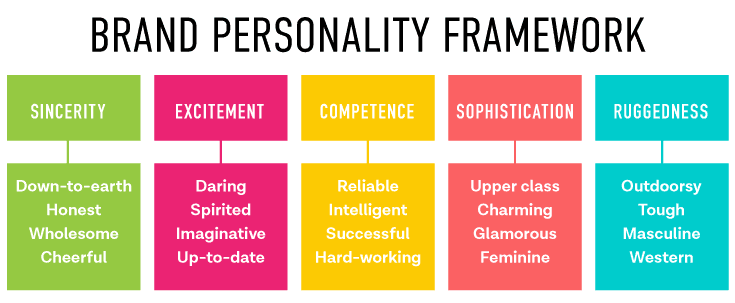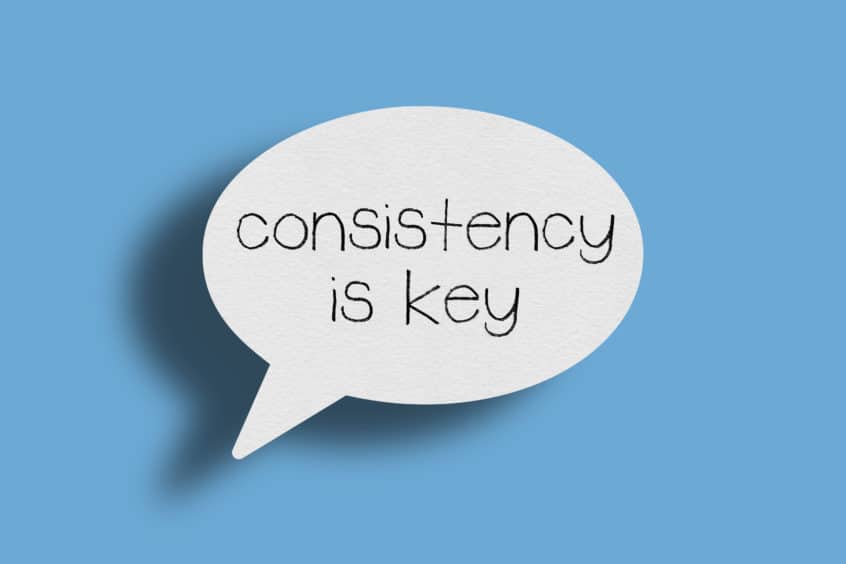In the ever-evolving world of marketing and business, one thing remains constant: the importance of branding. Your brand is not just a logo or a tagline; it’s the essence of your business, the story you tell, and the personality you project. In a crowded marketplace where consumers are bombarded with choices, it’s crucial to stand out. And the most effective way to do that is by branding with personality.
But what exactly does it mean to “brand with personality,” and how can you ensure that your brand consistently exudes this characteristic? This article will explore this concept in depth, providing insights, strategies, and examples to help you create a brand that captures the essence of your business and resonates with your target audience.
Table of Contents
ToggleDefining Branding with Personality
Before delving into the “how,” let’s first understand the “what.” Branding with personality involves infusing your brand with human-like traits, characteristics, and values. This approach makes your brand more relatable, memorable, and engaging. Essentially, it humanizes your brand, allowing customers to connect with it on a deeper emotional level.
To brand with personality, you must consider several essential elements:
1. Understand Your Brand’s Core Values
To brand with personality, you must know what your brand stands for. What are its core values, beliefs, and mission? These elements will form the foundation of your brand’s personality. Are you a tech company that values innovation and cutting-edge solutions? Or perhaps you’re a family-owned bakery that cherishes tradition and community. Your brand’s personality should reflect these principles.
2. Define Your Target Audience
Knowing your audience is crucial for effective branding with personality. Different people connect with different traits and characteristics. You must understand what resonates with your target audience to create a strong emotional connection. Is your brand’s personality aligned with their preferences and values? Tailoring your brand’s personality to your audience is a key aspect of branding with personality.
3. Consistency is Key
To always brand with personality, you must maintain a consistent identity across all touchpoints. Your brand’s personality should remain uniform, whether it’s your website, social media, advertising campaigns, or customer service. Inconsistencies can confuse your audience and dilute the emotional connection you’re trying to establish.
4. Be Authentic
Authenticity is at the heart of branding with personality. Don’t try to be something you’re not. People can spot insincerity from a mile away. Embrace your brand’s unique characteristics and values, and let them shine through in every aspect of your business. Authenticity builds trust, and trust is a cornerstone of strong brands.
5. Tell a Story
Every brand has a story. Your journey, challenges, and triumphs are all part of your brand’s narrative. Sharing this story humanizes your brand and allows customers to connect with it on a personal level. Use storytelling as a tool to convey your brand’s personality and values.
Now that we’ve defined the key elements of branding with personality, let’s explore strategies and tactics to help you consistently infuse your brand with the right character.
Strategy 1: Develop a Brand Personality Guide
To always brand with personality, start by creating a brand personality guide. This guide should detail the characteristics, traits, and values that define your brand. Consider the following questions:
- What adjectives best describe your brand? Is it playful, serious, or compassionate?
- What values does your brand hold dear? Is it environmentally conscious, customer-centric, or innovative?
- What emotions should your brand evoke in your audience? Should they feel inspired, comforted, or motivated?
- How would your brand behave if it were a person? Is it formal, casual, or humorous?
By answering these questions and others, you can develop a clear and comprehensive guide that serves as a reference for all aspects of your branding efforts. This guide ensures consistency and alignment across all your marketing activities.
Strategy 2: Create a Distinct Brand Voice
Your brand’s personality should come through not only in its visual elements but also in its communication. A distinct brand voice helps you convey your personality consistently. Whether you’re writing website copy, social media posts, or customer emails, your brand’s voice should be clear and distinctive.
For example, if your brand is fun and playful, your copywriting should reflect this with a light-hearted tone, witty humor, and casual language. On the other hand, if your brand is serious and professional, your communication should be more formal and precise.
Strategy 3: Visual Identity and Design
Visual elements, such as logos, color schemes, and design elements, significantly convey your brand’s personality. Every aspect of your visual identity should reflect your brand’s core values and traits. For instance, if your brand is eco-friendly and values sustainability, your visual identity should incorporate natural colors and organic shapes.
Remember, a well-designed logo and consistent visual identity can be a potential customer’s first impression of your brand. Make it count by ensuring it aligns with your brand’s personality.
Strategy 4: Embrace Storytelling
Storytelling is a powerful tool for branding with personality. Your brand’s story can connect with customers emotionally and make your brand more relatable. Share your journey, your challenges, and your successes. Use storytelling in your marketing campaigns, website, and social media posts to engage and captivate your audience.
For example, if your brand is in the health and wellness industry, you can share personal success stories of customers who have benefited from your products or services. These narratives humanize your brand and demonstrate its commitment to improving people’s lives.
Strategy 5: Engage with Your Audience
Building a brand with personality doesn’t mean merely projecting your values; it also involves listening and engaging with your audience. Social media has made it easier than ever to interact with customers in real time.
Respond to comments and messages, ask for feedback, and involve your audience in your brand’s journey. This fosters a sense of community and allows you to tailor your brand’s personality to your audience’s wants.
Strategy 6: Be Consistent Across Platforms
Consistency is a fundamental principle in branding with personality. Your brand’s personality should remain constant across all platforms and touchpoints. Whether a customer visits your website, reads your emails, or sees your social media posts, they should have a consistent experience.
One way to ensure this is by creating a brand style guide that outlines how your brand should be presented on different platforms. This guide can include guidelines for color usage, typography, and messaging tone, helping maintain a cohesive brand image.
Strategy 7: Educate Your Team
Branding with personality requires the involvement and commitment of your entire team. Educate your employees about your brand’s personality, values, and the importance of consistency. They are your brand ambassadors and should be able to embody your brand’s character in their interactions with customers, whether they work in marketing, customer service, or any other department.
Hold regular training sessions and discussions to ensure everyone is aligned with the brand’s personality and understands how to apply it in their roles.
Case Studies in Branding with Personality
Let’s take a look at a few real-world examples of companies that have excelled in branding with personality:
Apple: Innovative and Sleek
Apple’s brand is synonymous with innovation, simplicity, and sleek design. Every aspect of Apple’s branding exudes a clean and modern personality, from minimalist product packaging to iconic white earbuds. This consistency has contributed to their global success and a fiercely loyal customer base.
Ben & Jerry’s: Playful and Socially Conscious
Ben & Jerry‘s ice cream company is known for its playful and socially conscious brand personality. They use quirky flavor names, colorful packaging, and an outspoken stance on social and environmental issues to connect with their audience. This unique personality sets them apart in the ice cream industry.
Nike: Empowering and Motivating
Nike’s brand personality is all about empowerment and motivation. Their iconic “Just Do It” slogan and inspiring ads connect with athletes and fitness enthusiasts on a deeply emotional level. Nike’s branding consistently conveys that anyone can achieve their goals with the right mindset and determination.
Airbnb: Inclusive and Personal
Airbnb’s brand personality is rooted in inclusivity and “belonging anywhere.” They celebrate diversity and emphasize the personal connections that can be formed through their platform. By highlighting their hosts’ unique experiences, Airbnb creates a welcoming and individualistic brand.
Conclusion: The Power of Branding with Personality
In a world of fierce competition, where consumers are inundated with choices, branding with personality is a surefire way to stand out and build a loyal customer base. Your brand’s personality is not just a marketing gimmick; it reflects your core values and is a way to connect with your audience deeply emotionally.
You can always brand with personality by understanding your brand’s values, defining your target audience, and maintaining consistency, authenticity, and engagement. Create a brand personality guide, develop a distinct brand voice, and leverage your visual identity and storytelling capabilities. These strategies, the power of social media, and a well-informed team will help you build a brand that resonates and endures.
Remember that branding with personality is an ongoing journey. It’s not a one-time task but an ever-evolving process that adapts to your audience’s changing needs and preferences. As you consistently brand with personality, you’ll create a brand that people recognize and connect with personally and emotionally. So, take the first step today and start crafting a brand that speaks with personality, and watch your business thrive.
Read Next: Brand Crisis Management in a Digital World










